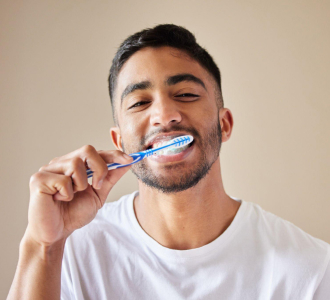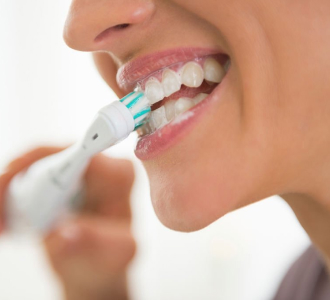
How important is brushing?
Brushing is an important part of oral hygiene and helps to remove plaque,bacteria, and food particles from your teeth that can cause tooth decay and gum disease. It is important to brush twice a day for two minutes each time, using a toothbrush with soft bristles.Brushing helps to keep your teeth and gums healthy and can prevent a variety of dental problems.
Is brushing needed for children?
Yes, brushing is important for children's oral health. It's recommended that children brush their teeth twice a day with a toothpaste that contains fluoride. Parents should also supervise their children while they brush to ensure they are doing it properly.


What types of toothbrushes should be used?
The type of toothbrush that should be used depends on the individual's oral hygiene needs. Generally speaking, a soft-bristled toothbrush is recommended as it is gentler on the gums and teeth. Individuals with braces or who have gum recession may benefit from using an extra-soft or ultra-soft toothbrush, as these are gentler on the delicate tissue. Electric toothbrushes are also recommended for their ability to effectively remove plaque and food particles from the teeth and gums.
What role does tooth paste play in brushing?
Toothpaste is an important part of brushing your teeth because it removes plaque and bacteria, freshens your breath, and has fluoride, which helps strengthen teeth and reduce cavities. It's important to use fluoride-based toothpaste because it helps prevent cavities and tooth decay.<< /p>


Does incorrect brushing have negative effects?
Yes, incorrect brushing can have negative effects on the teeth and gums. Brushing too hard can lead to gum recession, which can cause sensitivity and other oral health issues. Brushing too hard can also lead to enamel erosion, which may cause discoloration and other aesthetic issues. In addition, incorrect brushing technique can lead to plaque buildup, which can lead to cavities and other oral health problems.
- • Place your toothbrush at a 45-degree angle against the gum line and brush gently in a circular motion.
- • Brush the outer surfaces, the inner surfaces, and the chewing surfaces of the teeth.
- • Use the "toe" of the brush to clean the inside surfaces of the front teeth, using a gentle up-and-down stroke.
- • Brush your tongue to remove bacteria and keep your breath fresh.
- • Spit out the toothpaste, but don’t rinse your mouth with water right away. This helps protect your teeth against acid attacks.
- • UsBrush your teeth for two minutes, twice a day.
- • Using a soft-bristled toothbrush
This is the classic brushing method and is the most common. It involves using a soft-bristled toothbrush and gentle circular motions to clean the teeth.
- • Using an electric toothbrush
Because they are made to move in a circular motion, electric toothbrushes can be more effective than manual brushes at cleaning the teeth.
- • Using interdental brushes
Interdental brushes are made to clean between the teeth and can be very effective at removing plaque and food particles from hard-to-reach places.
- • Using a tongue scraper
A tongue scraper can be used to remove bacteria and food debris from the tongue, which can help reduce bad breath.
- • Using a water flosser
A water flosser is an effective way to clean between the teeth, as the high-pressure water jet can remove plaque and food debris more effectively than traditional flossing.
- • It is recommended that you brush your teeth at least twice a day, for two minutes each time. It is also important to floss every day.
- • The American Dental Association recommends brushing teeth for two minutes twice a day. While this is the general recommendation, individuals may need to adjust the duration of their brushing according to personal preference or dental health needs.
- • Yes, regular flossing is very important for good oral health. Flossing helps remove plaque buildup and food particles from between the teeth and along the gum line, reducing the risk of gum disease and tooth decay.
- • Typically, a brush should be changed when it begins to look worn or frayed, or every three to four months, whichever comes first.



